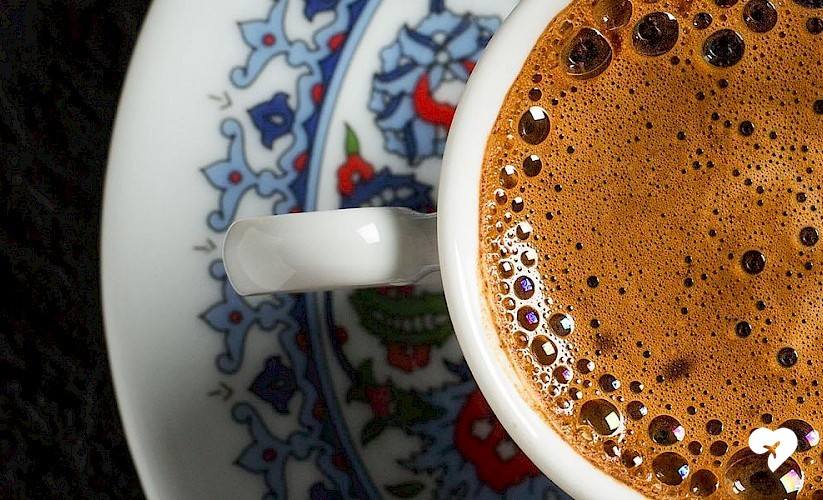In 2013, Turkish coffee culture and tradition took its place in the UNESCO Intangible Cultural Heritage List. It’s critical to Turkish culture, and the Turkish word for “kahvaltı” even translates directly as the meal “before coffee.” When visiting friends and family in Turkey, Turkish coffee is always part of every occasion and will always be offered when you enter someone’s home. It’s a critical part of wedding celebrations, engagements, births, and almost anything you can think of.
Telling fortunes in the coffee grounds is another feature of Turkish coffee, and the popularity of the drink is what caused the first coffee houses to form in Istanbul, and from there spread to the rests of Europe. “Every cup of coffee carries 40 years of memories” is a traditional Turkish proverb, so you can really see just how important this drink is to the culture.
But what is Turkish coffee and what makes it different from other types of coffee? It’s not, as you might expect, the beans. Any type of coffee bean can be used for Turkish coffee (though some work better than others, of course). Turkish coffee is simply very finely ground coffee, which are then left in the coffee when served. The coffee is boiled (with sugar already inside) in a special pot called a Cezve, and is boiled until it froths, often multiple times. So what are these multiple types of Turkish coffee?
Menengiç

Menengiç Turkish coffee actually is made with completely different beans, not coffee beans at all. It’s made out of the beans of a Pistacia terebinthus tree, which is native to southeastern Turkey. The coffee features no caffeine and a fruitier flavor than normal coffee, though still dry and, as it’s made the same way as normal Turkish coffee, features more or less the same consistency. It’s a local delicacy and difficult to find anywhere outside of Turkey, so once you’re here you really should make the effort to try it! Needless to say, as with Turkish coffee, it has a number of health benefits associated with it.
Dibek

Dibek Turkish coffee is stone-ground Turkish coffee, usually beaten with a stone pestle in stone mortar. The way it’s ground just change the flavor, and it makes it a little bit lighter, both in terms of color and flavor. It’s a little thicker too, and it’s cooked slightly different – hot water is used rather than the cold water that’s heated up for traditional Turkish coffee. Many coffee houses will have each type of coffee on the menu, and when you want a lighter, perhaps almost milky cup, then Dibek is the way to go.
Mırra

Mirra coffee is a stronger, slightly bitter coffee (the word mirra is literally derived from the Arabic word for “bitter”). The bitter flavor comes from the beans being roasted twice, and not ground quite as finely as traditional Turkish coffee. Often, cardamom or other flavors are added to offset the bitterness, and it’s possibly the most common form of coffee in Turkey’s southeast, particularly in Urfa.
On Sand/Coals/Ashes

The different ways Turkish coffee can be cooked, on sand, on coals or on ashes. As you’d guess, the way it’s cooked affects the way it tastes, though cooking on sand is probably the most traditional. You’ll see all three commonly enough in Turkey, and of course in homes it’ll just be cooked on an open stove, but where’s the fun in that!
